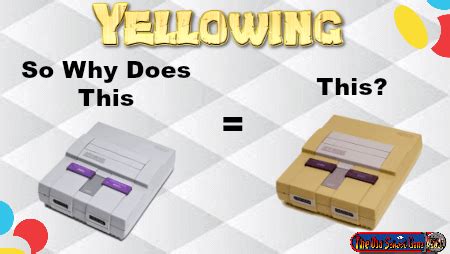Why Do Old Computers and Game Consoles Turn Yellow?

Remember the good ol' days of computing and gaming? Those bulky computers and chunky game consoles may have been slow by today's standards, but they hold a special place in our hearts. If you've ever pulled out your vintage tech from storage only to find it sporting an unsightly yellow hue, you're not alone. But fear not! In this article, we're going to delve into the fascinating world of retro tech discoloration. So, kick back, grab a nostalgic snack, and let's explore why old computers and game consoles turn yellow.
The Mystery of the Yellowing Phenomenon
Picture this: You retrieve your beloved Atari 2600 or Commodore 64 from the attic, eager to relive some classic gaming moments. But, instead of pristine white, you're greeted by a yellowish tint covering the once-beautiful casing. What gives? The culprit behind this phenomenon is a combination of factors, primarily involving the materials used in vintage tech's construction. During the 1970s and 1980s, when these iconic devices were manufactured, manufacturers often used a type of fire-retardant plastic that contained bromine. While bromine was effective at preventing fires, it had an unfortunate side effect: it could cause the plastic to turn yellow over time when exposed to heat and light. This chemical reaction, known as "bromine blooming," is responsible for the discoloration that plagues your retro tech.Sunlight and Heat: Partners in Crime
Ever left your old computer or console sitting by a sun-soaked window or stored it in a warm attic? If so, you've unwittingly accelerated the yellowing process. The bromine-laden plastic in these devices is sensitive to ultraviolet (UV) light and heat, which trigger the chemical reaction that causes yellowing. Over the years, prolonged exposure to sunlight and high temperatures causes the plastic to break down, resulting in the not-so-appealing appearance you're familiar with.Oxidation: The Aging Factor
Beyond bromine blooming, oxidation also plays a role in the yellowing of vintage tech. Oxidation is a natural process that occurs when the plastic interacts with oxygen in the air. As the plastic ages, its molecular structure changes, leading to a change in color. This is why even tech that has been stored in a cool, dark place can still develop a yellowish tint over time.Battling the Yellow Invasion
Now that we've unraveled the mystery behind the yellowing phenomenon, you might be wondering if there's any hope for restoring your cherished tech to its original glory. While it's challenging to reverse the effects of bromine blooming and oxidation completely, there are some steps you can take to slow down the yellow invasion and potentially lighten the discoloration:- Keep It Cool and Dark: Store your vintage tech in a cool, dark place to minimize exposure to UV light and heat. This can help prevent further yellowing.
- Clean with Care: Gently clean the surface of your devices using a mild detergent. Avoid harsh chemicals, as they can exacerbate the discoloration.
- Retr0bright to the Rescue: Some enthusiasts have had success using a concoction called "Retr0bright" to reduce yellowing. This homemade mixture typically involves hydrogen peroxide and other ingredients. However, be cautious, as the results can vary, and improper use may damage your tech further.
- Embrace the Patina: Ultimately, it's essential to remember that yellowing is a natural part of the aging process for vintage tech. Embracing the patina can add character and authenticity to your collection.
Preventing Future Yellowing
If you're a proud owner of vintage tech or plan to become one, prevention is key to keeping yellowing at bay. Here are some proactive steps you can take:- UV-Blocking Films: Consider applying UV-blocking films to the surfaces of your devices. These films can help shield your tech from the harmful effects of sunlight.
- Climate Control: Maintain a consistent and cool environment for your collection. Investing in a dehumidifier and temperature control can go a long way in preserving your tech.
- Replicas and Covers: If you're passionate about preserving the pristine appearance of your tech, consider using replicas or custom-made covers to shield your devices from light and heat.